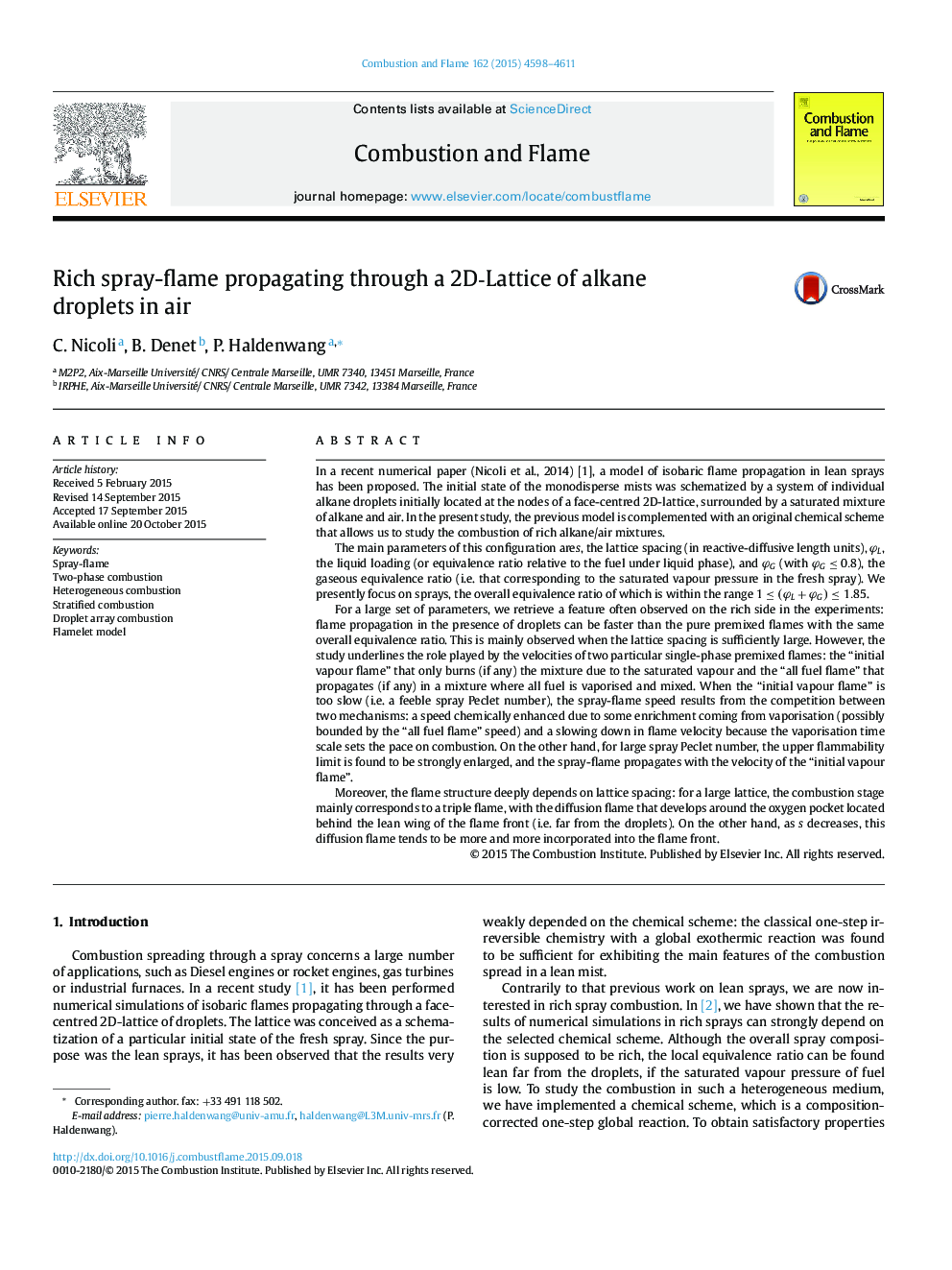| Article ID | Journal | Published Year | Pages | File Type |
|---|---|---|---|---|
| 168614 | Combustion and Flame | 2015 | 14 Pages |
In a recent numerical paper (Nicoli et al., 2014) [1], a model of isobaric flame propagation in lean sprays has been proposed. The initial state of the monodisperse mists was schematized by a system of individual alkane droplets initially located at the nodes of a face-centred 2D-lattice, surrounded by a saturated mixture of alkane and air. In the present study, the previous model is complemented with an original chemical scheme that allows us to study the combustion of rich alkane/air mixtures.The main parameters of this configuration ares, the lattice spacing (in reactive-diffusive length units), φL, the liquid loading (or equivalence ratio relative to the fuel under liquid phase), and φG (with φG ≤ 0.8), the gaseous equivalence ratio (i.e. that corresponding to the saturated vapour pressure in the fresh spray). We presently focus on sprays, the overall equivalence ratio of which is within the range 1≤(φL+φG)≤1.851≤(φL+φG)≤1.85.For a large set of parameters, we retrieve a feature often observed on the rich side in the experiments: flame propagation in the presence of droplets can be faster than the pure premixed flames with the same overall equivalence ratio. This is mainly observed when the lattice spacing is sufficiently large. However, the study underlines the role played by the velocities of two particular single-phase premixed flames: the “initial vapour flame” that only burns (if any) the mixture due to the saturated vapour and the “all fuel flame” that propagates (if any) in a mixture where all fuel is vaporised and mixed. When the “initial vapour flame” is too slow (i.e. a feeble spray Peclet number), the spray-flame speed results from the competition between two mechanisms: a speed chemically enhanced due to some enrichment coming from vaporisation (possibly bounded by the “all fuel flame” speed) and a slowing down in flame velocity because the vaporisation time scale sets the pace on combustion. On the other hand, for large spray Peclet number, the upper flammability limit is found to be strongly enlarged, and the spray-flame propagates with the velocity of the “initial vapour flame”.Moreover, the flame structure deeply depends on lattice spacing: for a large lattice, the combustion stage mainly corresponds to a triple flame, with the diffusion flame that develops around the oxygen pocket located behind the lean wing of the flame front (i.e. far from the droplets). On the other hand, as s decreases, this diffusion flame tends to be more and more incorporated into the flame front.
